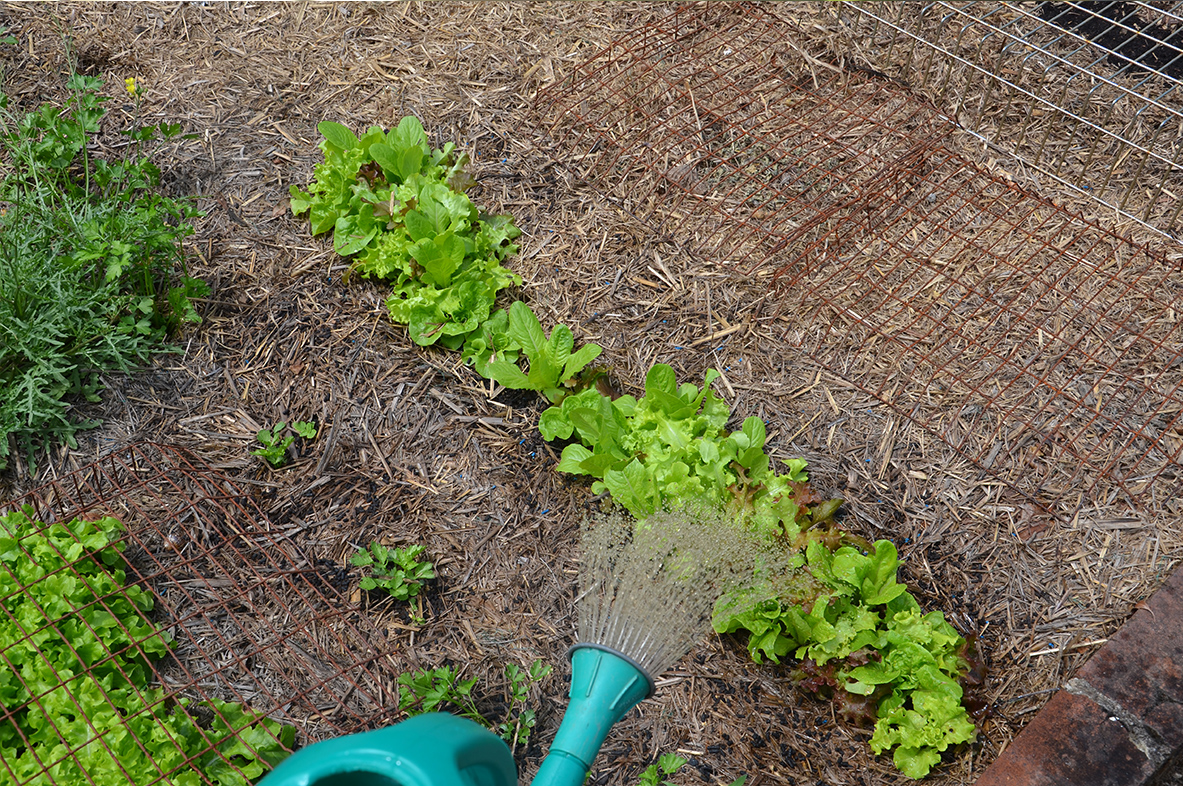
So, what is Mesclun? according to https://en.wikipedia.org Mesclum (French pronunciation: [mɛsˈklœ̃]) is a mix of assorted small young salad greens that originated in Provence, France.
I use mixed young leaves constantly, and in great quantity in salads, on sandwiches and as wilted greens. I dislike buying them as they are either wilted and dry looking if sold loose or often slimy if sold as a bagged product. Bought leaves also seem to lack any flavour.
Therefore, I need to keep a continual supply growing in my garden all year.
The mix can vary during the year.
In spring summer and autumn, the bulk of the mix will be open leafed lettuce varieties with rocket, coriander and young beetroot and silverbeet leaves added to complement these.
Whereas in winter there will be more rocket and coriander with the addition of young English spinach, beetroot and kale leaves.
You can put whatever you like in the mix and it will vary depending on what climate you are growing in and the time of year.
Over the many years of growing theses mixes, I have discovered a few tips that ensure I have a ready supply of mixed leaves all the time and thought I would share these with you.
Tip 1. Plant by seed and in situ (where they are to grow). This is by far the quickest and cheapest way to keep a good supply of leaves available, but purchasing seedlings can also work. All the leaf varieties l I mentioned above are easy to germinate, just prepare an area of soil, scatter seed over the prepared ground, cover with seed raising mix and keep moist.
There is no need to worry about spacing as they can be planted quite thickly and then cut as baby leaf after three to four weeks.
Also let some plants go to flower and set seed so they self-seed around your garden ensuring a continual supply.
If you want a more in-depth guide to starting plants from seed check out my ebook at http://www.myproductivebackyard.com.au/product/the-annual-vegetable-garden-module-2/,
Tip 2. Successive planting. I have written about successive planting before for other varieties of vegetables and herbs, so it will be no surprise to those of you who read my blog to know I do this for my mixed leaves as well. To ensure a have a continual supply of leaves I try and plant a 20cm to 30cm row of mixed seeds every two to three weeks most of the year and in the summer months when I am more likely to eat more salads, perhaps this amount every week.
Why not download my free infographic about succession planting? Here is the link http://www.myproductivebackyard.com.au/product/free-download-harvest-food-all-the-time-with-successive-planting/
Tip 3. Keep moist. Water stress is one of the main reasons for leaves becoming bitter or bolting to flower so keep your young plants well-watered. If the area you are planting them in has a tendency to dry out, increase its moisture holding capacity in the long term by adding well composted organic matter to increase the humus content of the soil and for a short-term solution apply a soil wetting agent.
Fertilise for leaf growth. For all the leafy plants I have mentioned, what we are trying to produce is an abundance of leaf growth. So, you need to keep them actively growing. To do this prepare the soil they are to be planted in with a fertiliser with a high nitrogen ratio, such as pelletised poultry fertiliser. Once germinated and they have about four true leaves, feed them twice a week with a half-strength high nitrogen liquid fertiliser such as Powerfeed or a fertiliser tea made from a material such as poultry manure, green leafy weeds or chopped up legumes.
Tip 4. Keep cool. Although most lettuce and other leafy plants I use in my mix love full sun they will bolt in hot weather, so in summer I plant them in a slightly shaded spot that avoids hot afternoon sun or plant in between larger plants such as corm that will shade them. If this is not possible, try planting them in pots that can be moved into a cooler spot if hot weather is predicted.
So if you use a lot of mixed leaf salad leaves, why not try following these few easy tips and hopefully this year you will have a continual supply of mesclun in your garden that can be picked and eaten fresh whenever you want it.
Happy Gardening Kathy